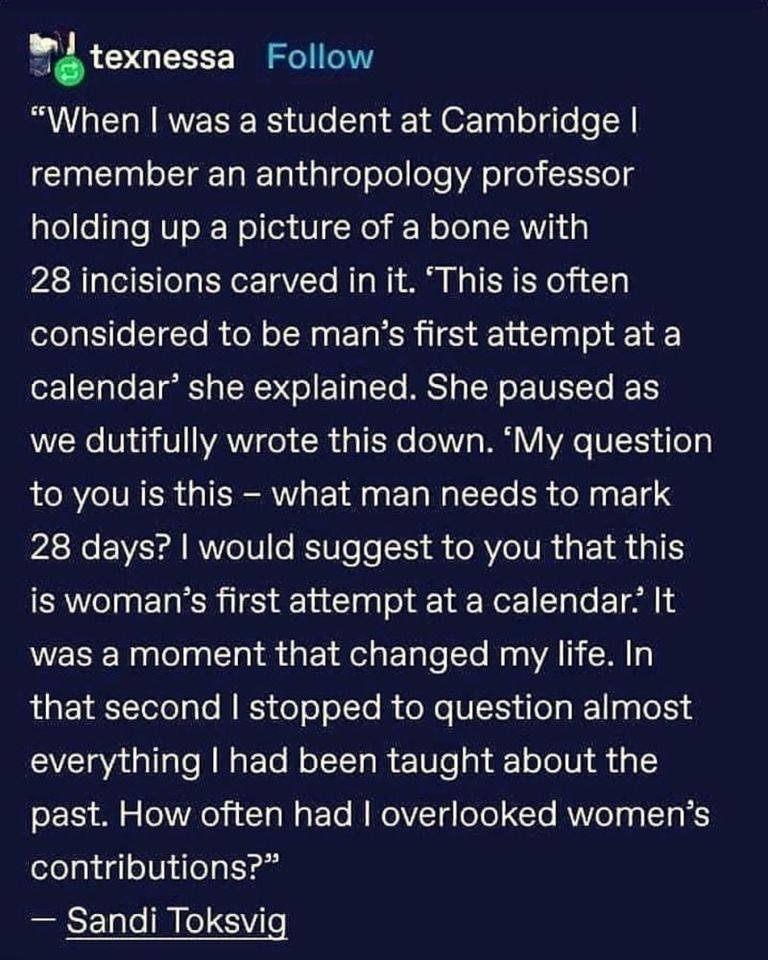this post was submitted on 10 Mar 2024
963 points (87.9% liked)
Memes
52302 readers
1056 users here now
Rules:
- Be civil and nice.
- Try not to excessively repost, as a rule of thumb, wait at least 2 months to do it if you have to.
founded 6 years ago
MODERATORS
you are viewing a single comment's thread
view the rest of the comments
view the rest of the comments

"man" as in human kind.
I agree the linguistics here are unfortunate, but here we are, and that word, in that context, is normally gender neutral.
~~Also, 28 day calendar probably means it's the moon.~~
It's important to note how we got here. In old English man just meant human. Wereman meant male and wifman meant female. Over time that "were" prefix got dropped and man now means male but the ambiguous meaning of humankind stuck around. In fact "human" comes from old french "of man", again the non-gendered use of the word man.
The point is to fix all these problems we just have to bring back the "were". The progressive werewolves are way ahead of us on this issue.
Hunter, werehunter, wifhunter. fun!
the real question is how are we going to refer to male wolves?
It would be interesting to see what in an alternate timeline, English would have looked like today if the Norman invasion never happened.
I'm not seeing a comment pointing out why 28 days isn't a moon thing, so I'll take a shot. If you watch new moon to new moon or full moon to full moon, it's a 29.5 day cycle. It's true, the moon's orbit is only 28 days. However, that's 360° of travel. We don't track the moon against the stars for its cycle though, it's tracked against the sun. A full moon sits opposite the sun, a new moon in line with the sun, etc. So, in that 28 day orbital period, the earth has also orbited about 1/13 of an orbit around the sun, changing the position of the sun against the stars . That means the moon has to travel an extra 28° of orbit to reach the new moon position again - about an extra day an a half.
Hm, that's odd! it's right there
https://discuss.tchncs.de/comment/8329564
Odd indeed since the link works fine in my mobile app (connect) but doesn't show on the native comment thread. I kinds figured it was something like that with a different source instance. At least I can feel good knowing I explained where 28 does occur
You mean apart from them occuring at set intervals? The length of time between the average women's periods is 28 days, but the moon's 28 day cycle is 100% reliable, and always happens regardless of individual stressors. Having a regular solar event that confirms you're accurately keeping track of days is pretty practical.